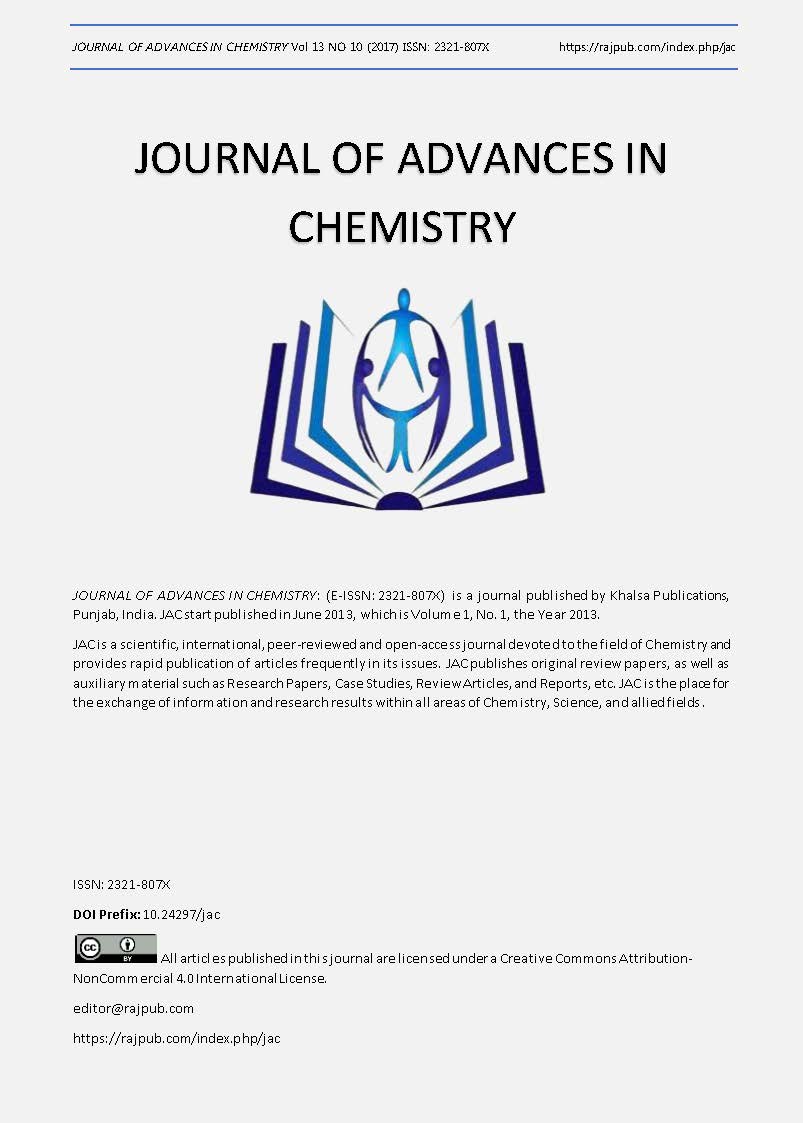Synthesis ,Characterization and invitro evaluation of anticancer activity of new hydroxamicacid basedHDACi containing substituted thaizolesas a cap linking moiety.
DOI:
https://doi.org/10.24297/jac.v13i10.5886Keywords:
HDACi, amino, thiazole-2-thiol, new CAP groupsAbstract
The present study was undertaken to synthesize, characterize and evaluate the anticancer activity of new derivatives of hydroxamate –based HDACi having S-subistituted-5-amino1,3,4thadiazole as a cap linking moiety ,with suitable aliphatic linker.The structures and purity of the targeted compounds were confirmed by TLC , FTIR ,H-NMR and mass spectroscopy and their anticancer activity were evaluated by comparative cytotoxic study , Using HeLa nuclear extract and normal embryonic fibroblasts cell lines.All the synthesized compounds shows good anticancer activity, represented by their high rate of growth inhibition on Hela cell line and low cytotocic effect on normal cell line .Compound (VAb) show the best safety index(SI) that represented by its selective cytotoxic activity on HeLa cell linewith low cytotoxic effect on normal embryonic cell line.
Downloads
References
2-Wang C., et al.:Design, synthesis, and evaluation of hydroxamic acid-based molecular probes for in vivo imaging of histone deacetylase (HDAC) in brain. American journal of nuclear medicine and molecular imaging.2014; 4(1): p.29.â€
3-Yadav R., Srivastava A., Chandra S. &Rai, A.: Role of epigenetic mechanisms in various cancer therapies. Pharmaceutical and Biological Evaluations 2016; 3(2):pp. 178-184.â€
4-Ramaswamy A., Bahar I. &Ioshikhes I.: Structural dynamics of nucleosome core particle: comparison with nucleosomes containing histone variants. Proteins: Structure, Function, and Bioinformatics. 2005; 58(3):pp. 683-696.â€
5-â€Tandon N., Ramakrishnan V. & Kumar S.:Clinical use and applications of histone deacetylase inhibitors in multiple myeloma. Clinical pharmacology: advances and applications. 2016; 8: p.35.â€
6-Zwergel C., Stazi G., Valente S. & Mai A.: Histone deacetylase inhibitors: updated studies in various epigenetic-related diseases. Journal of Clinical Epigenetics. 2016; 2(1):pp.45-49.
7-West C. &Johnstone W. : New and emerging HDAC inhibitors for cancer treatment. The Journal of clinical investigation. 2014; 124(1):pp. 30-39.â€
8--Li Z. & Zhu G.: Targeting histone deacetylases for cancer therapy: from molecular mechanisms to clinical implications. Int J Biol Sci. 2014; 10(7):pp.757-770
9-Gryder B., et al.: Selectively targeting prostate cancer with antiandrogen equipped histone deacetylase inhibitors. ACS chemical biology 2013; 8(11):pp. 2550-2560
10-Merchant L., Bai L. & Okada M.: ZBP-89 mediates butyrate regulation of gene expression. The Journal of nutrition 2003; 133(7): pp.2456S-2460S.â€
11-Hull E., Montgomery R. &LeyvaJ.: HDAC Inhibitors as Epigenetic Regulators of the Immune System: Impacts on Cancer Therapy and Inflammatory Diseases. BioMed Research International 2016;Vol 2016; Article ID 8797206.
12-Petrow V. Stephenson O., Thomas A. J. and Wild A. M: Preparation and Hydrolysis of some Derivatives of 1, 3, 4-Thiadiazole. Journal of the Chemical Society, 1985; 1958:pp. 1508-1513.
13-Katke S. A., et al. Synthesis Of Biologically Active 2-Chloro-N-Alkyl/Aryl Acetamide Derivatives. International Journal of Pharma Sciences and Research (IJPSR) 2011; 2(7):pp. 148-156.
14- Azizi N, et al, A green highly and highly efficient alkylation ofthiols in water, J. Iran. Chem. Soc., 2009, 6 (4): pp. 749-753.
15-Vogal, A.: Textbook of Practical Organic Chemistry (5thed). Langman, New York, 1989; p. 654
16-Ho Y., Strobel E., Ralbovsky J. &Galemmo A.: Improved solution-and solid-phase preparation of hydroxamic acids from esters. The Journal of organic chemistry 2005; 70(12):pp. 4873-4875.â€
17-AL-Shammari A. M., et al.: In vitro synergistic enhancement of newcastle disease virus to 5-fluorouracil cytotoxicity against tumor cells. Biomedicines. 2016; 4(1):p. 3.â€
18-Al-Shammari M., Rameez H. & Al-Taee F.: Newcastle disease virus, rituximab, and doxorubicin combination as anti-hematological malignancy therapy. OncolyticVirotherapy 2016; 5:pp. 27–34.
19-Nebojsa P.:Synthesis and high in vitro cytotoxicity of some (S,S)-ethylenediamine-N,N’-di-2-propanoatedihydrochloride esters.J.Serb.Chem. Soc.2014; 79 (6).pp: 649–658
Downloads
Published
How to Cite
Issue
Section
License
 All articles published in Journal of Advances in Linguistics are licensed under a Creative Commons Attribution 4.0 International License.
All articles published in Journal of Advances in Linguistics are licensed under a Creative Commons Attribution 4.0 International License.




